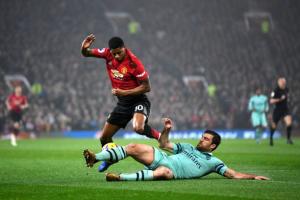
Anyone who plays a sport will know that injury often comes with the territory and football is no exception. If you’re a football player then you know that injury is common and for the most part, won’t affect your career in the long term if its appropriately treated. This article is going to help you treat the most common injuries players get.
Hamstring Injury
Hamstring injury is the most common injury you can get as a player that doesn’t involve any physical contact with another player. Just days ago Barcelona’s Ousmane Dembele had to miss Barcelona’s Champions League semi-final game again Liverpool after suffering a hamstring injury of his own.
Most often you’ll find it’s caused by anything that involves being fast on your feet, but most typically it’s attributed to sprinting exercises which is why football players need to especially careful. The less common type of hamstring injury is ‘stretching injury’ that happens when the joints are moved to extremely wide positions. If you’ve ever felt a sharp pain when you’re attempting those high kicks or a sliding tackle, you’ve probably damaged a hamstring!
To treat a hamstring injury there are four simple things you can do: Rest, ice the injury, compress it and keep it elevated. Your GP may recommend using crutches in a more severe case, and you should only ice the muscle for 20 minutes every 2-3 hours. After that, it’s a waiting game.
Anterior Cruciate Ligament (ACL) Damage
Your ACL is usually injured if when your lower leg stays in a rigid position while the upper part has twisted. For players, you’ll know this generally as a sharp pain or swelling if you get tackled or you don’t quite stick the landing on that header you just dived into the air for. Shrewsbury fans out there will be all too familiar with this one after defender Ryan Sears was taken out of action for almost nine months after sustaining an ACL injury in training in April.
Treatment follows much the same path as a hamstring injury, but with the added element of needing a fair bit of physiotherapy as soon as the swelling and pain subside to treat the muscle before it weakens too much. This is a good and a bad thing depending on how you look at it.
On the one hand, you won’t need invasive surgery unless you’ve completely torn your ACL (which is rare). On the other, promptly after the injury, you will need physiotherapy and intensive rehabilitation which can take a long some time to get from the NHS. So, your best route is to go down the private health insurance route so that you can get access to physiotherapy as soon as you’re well enough to. The longer you wait for rehabilitation, the weaker the muscle grows.
Knee Cartilage Tear
Don’t let the name fool you. The term ‘cartilage tear’ is slightly deceptive. With this one, it’s the meniscus in your knee that’s actually injured. It usually happens when a player twists and turns suddenly and the tissue gets jammed in-between the two knee bones, causing it to get nipped or cut. The tissue will only completely tear if the force you put on the bones is severe.
Minor cases of nips to the meniscus cartilage can often settle down on their own. However, severe cases where the tissue has actually torn and caused the knee joints to lock are another story. In these cases, you should see a doctor and unfortunately will likely need surgery to remove the torn cartilage, then a stint of rehabilitation through the NHS or with a private physiotherapist.
These cases are severe but won’t mean the end of your days on the pitch. Just last month Chelsea’s Antonio Rudiger underwent surgery for a cartilage tear, but the defender looks set to be back in the game early next season after some rehibition over the summer.
Sprained Ankle
You can get a sprained ankle in a lot of ways, but the most common for players tend to be: trying to land that all-important goal, during a tackle or running on uneven ground. Luckily, a sprained ankle is nothing too strenuous or career-threatening. Its merely soft tissue damage to the ligaments in the ankle joint.
Treatment for a sprained ankle usually involves a lot of rest and keeping the ankle compressed with bandages. What players need to be careful of here isn’t so much the strain of injury, it’s the waiting time. Recovery on ankle tissue is a gradual process and the longer you have symptoms before starting treatment the longer recovery is likely to take.
Now you know the most common injuries, and how to handle them, it’s down to you to make sure you avoid them so you can focus on what matters: scoring goals and winning games.



